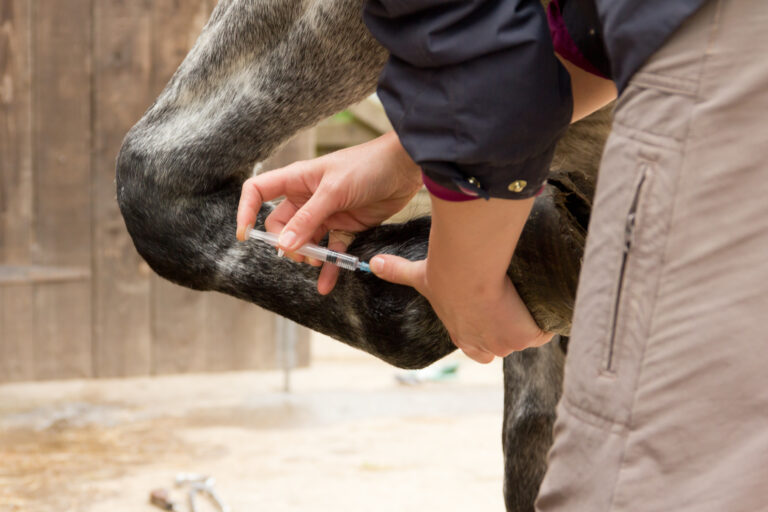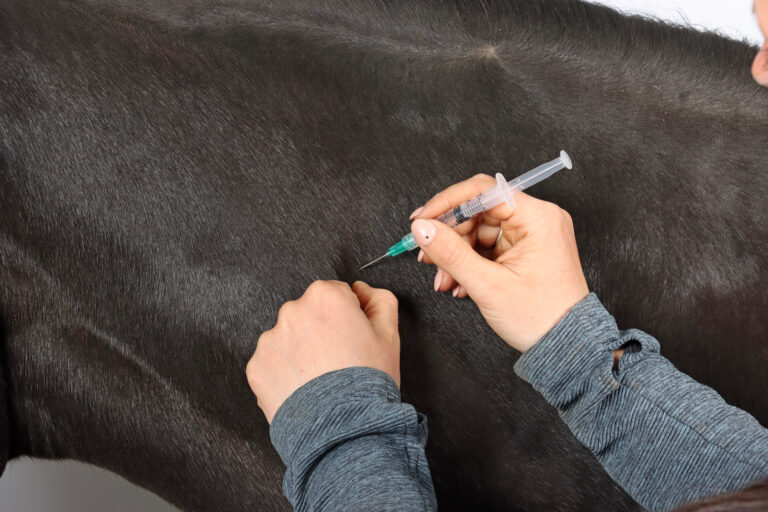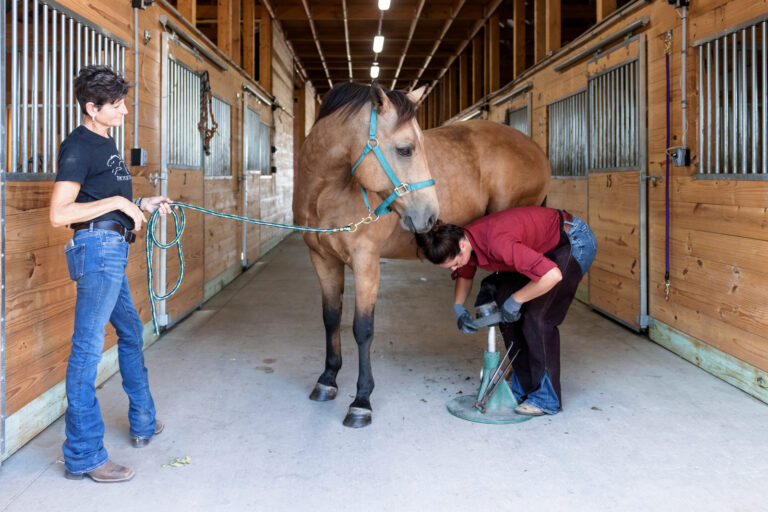
It’s a Tuesday night. You’ve just settled in to watch your daughter’s lacrosse game when an urgent text arrives. A client’s horse is bleeding profusely and likely needs stitches. It’s a Saturday night, the curtain just went up at your son’s senior play, and a horse owner asks for help with a mare that’s having difficulty foaling. Or you might have finally given yourself a long weekend—the first official time off you’ve had in years, and a client has a horse with severe colic.
For the solo practitioner, an associate can’t just pick up the case—you’re the only one who can respond. The benefits of running a solo practice are plentiful, but sometimes it can mean sacrificing time for your family, outside interests and general self-care.
Increasingly, solo practitioners are forming or joining cooperatives to share the burden of emergency calls. This tactic provides much-needed support without sacrificing what veterinarians love most about working independently. Florida-based veterinarian Amanda McCleery, DVM, described her participation in a co-op as a game-changer. Without it, she likely would have quit equine medicine. She and three practitioners collaborate to cover emergencies so that each person is guaranteed time off.
“Each of us runs individual practices with our own name, but we lean on each other,” McCleery said. “The big thing is that we all need time to ‘turn off,’ which is hard when you have to do it all. The co-op is a good career tool for completely turning off.”
Nurturing partnerships with other veterinarians to cover a case for a solo practitioner isn’t a new concept. However, the method is often a backup plan rather than a standard operating procedure. Given the increasing focus on mental health and career longevity, it’s becoming a more widely embraced strategy.
McCleery acknowledged that some geographic locations struggle to make this model work because of the physical distance between practices and feelings of intense competitiveness. However, the approach has worked in some regions for decades.
“Family life pulls, and the practice takes away from that time together,” she said. “We also tend to trample over those who do not have a family but equally need that time. The co-op allows for that.”
In this article, McCleery offers advice for developing a cooperative that works.
Regular Meetings
McCleery believes monthly in-person meetings are the key to success for the group. They set the schedule quarterly. Each practitioner is on call one Friday, Saturday and Sunday a month. Each one also creates plans for covering evening emergency calls.
“We’re also experimenting with a four-day week to make time for the other things in life we all have going on,” she said.
The transactional details determine “who’s on first,” but discussions at meetings go deeper. “We don’t meet just to schedule,” she said. “We talk about cases, clients, business in general, mental health … whatever the topic is that helps us with what we’re going through. It has helped us face changes and challenges in our practices and lives.”
The monthly meetings foster trust among the group members and demonstrate their commitment to one another. They also offer opportunities for pushing people outside their comfort zones, as the members in McCleery’s group work on a variety of livestock species.
“We talk about what to do with a down cow or a goat emergency,” she said. “It is hard but fun to learn about the other animals, and it helps you think outside the box when working on your equine clients. It has been awesome knowing I have three other vets I can consult with and ask what they are thinking on approaching any case.”

Awareness of the Terms
Defining expectations and determining each person’s comfort level before signing on is critical. In the cooperative to which McCleery belongs, half of the veterinarians are also large animal practitioners. That means each group member must be open to working on species other than horses.
“You have to consider what trade-offs you are OK with,” McCleery said. “For example, would you work on a pig so you can take off next weekend?”
McCleery sees the chance to work on other animals as an opportunity to stretch and grow her skills. It can be daunting but rewarding.
“We had a great member of the group who decided to drop out because doing all species caused her extra stress and anxiety,” she said. “She wasn’t comfortable doing that and was happier working just on equine clients.”
It’s also essential to run a cost-benefit analysis. For example, signing onto a cooperative might mean driving farther to emergencies, and with rising gas prices that might be problematic for some.
“Make it clear what your deal-breakers are,” she said. “It is important to identify these before agreeing to a co-op. It’s also essential to voice concerns if things change.”
Client Loyalty
Solo practitioners sometimes shy away from cooperatives fearing they might lose clients to another practice. McCleery said her group is explicit with clients and explains they are only there to fill in for the regular veterinarian. They make clear that all notes, recommendations and follow-ups go back to the primary veterinarian.
“It is true your clients are being exposed to other vets, and people may want to switch,” she said. “That can cause hard feelings, but we make it very clear their doctor is skilled and prepared to take over. I tell them I would trust any of these vets with my animal any day of the week.”
If one person in the group receives a call from an emergency client inquiring about vaccines or routine care, the vet receiving the call has a direct conversation with the client’s veterinarian.
“It is foolish to ignore it because it will happen,” she said. “Talking about it and letting the other vet know about the conversation and request makes it so no one feels like another member is undercutting them.”
Price fixing is illegal, so the group avoids discussing fees, said McCleery. Like in any line of business, most practices are priced similarly based on their market and expertise. One service might cost more at practice X or less at practice Z, but with other services it might be the opposite, so most things balance out. However, McCleery’s group agrees not to up-charge emergency fees when responding to clients served by a group member.
“I don’t know if our practices are priced similarly in emergencies, but horse owners don’t necessarily care about price at that point. Other than not upping fees on non-clients, we don’t talk about price,” she said. “I hear many people talking about that, but I wouldn’t worry unless it becomes an issue. Just charge what you would charge, and always give an estimate before you go.”

The group presents a unified effort by creating a magnet that includes each participating veterinarian’s practice name, logo and contact information. The co-op also promotes teamwork and camaraderie through jointly hosted clinics for horse owners.
For example, they co-hosted a seminar before the pandemic and allowed each veterinarian time to present. It gave those who attended a chance to see how they work together.
“It got really good feedback and demonstrated how we are invested in helping each other,” she said.
Co-ops can be game changers, but that doesn’t mean they are easy. Open lines of communication are critical to establishing a partnership that lasts. McCleery has seen other alliances dissolve because of communication breakdowns. For example, she heard about a vet’s full voice mailbox resulting in clients not getting served. Rather than voicing a concern like this as soon as it arises, it can bubble under the surface until it boils over into damaged relationships.
“Bringing these things up before people get too irritated helps build our group’s trust,” McCleery said.
The Big Picture
McCleery believes forming or joining a cooperative helps you be a better veterinarian and keeps you from getting isolated in solo practice.
“You get to enjoy the benefits of bigger practices, like talking about cases, having others to bounce ideas off of
and rotating schedules, without giving up the flexibility of being a solo practitioner,” she said.
For McCleery’s group, four to five veterinarians work well, but she said the number of participants depends on practice size, geography and other factors. Before jumping all in, she recommended meeting up with other vets in the area casually before discussing a cooperative to get to know them and decide if your practices might be able to work together.
“Joining a cooperative is much more than somebody taking over your call,” McCleery said. “We have a group text that’s always going … like ‘Has anybody seen this?’ or ‘Here’s the bloodwork; what you do think?’ The relationship with my colleagues has proven to be as important as the time off.”




